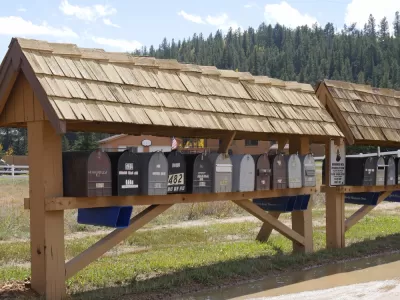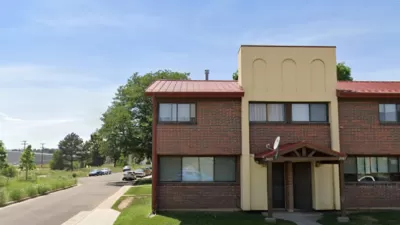When home values rise, the state constitution requires cuts to residential tax rates that severely impact less-developed areas.

A new report shows that, once again, a collision of two tax mandates in the Colorado state constitution will further reduce the funding available to rural districts for schools, fire departments, and other services.
Brian Eason of the The Denver Post quotes one lawmaker who, after hearing the latest forecast commented, “Thank you for this very disturbing analysis.”
The first issue at hand is the 1982 Gallagher Amendment, which mandates that residential property taxes can comprise only 45 percent of statewide property tax revenue, with commercial and industrial property making up the remaining 45 percent. (In 1982, Colorado homeowners paid significantly more in property taxes than did businesses.)
The second is the 1992 Taxpayer Bill of Rights, which requires voter approval of any increase in property taxes.
As a result of Colorado’s rapid development over the last decades, residential property values soared, and in order to maintain the ratio determined by Gallagher, tax rates on those properties have fallen. (Meanwhile, the tax rate on commercial properties has remained the same.)
The most significant problem, at the moment, is that “The Gallagher cuts have disparate effects in different parts of the state.”
Because residential property values in areas like the Front Range have soared over the last decades, those areas are still seeing an increase in revenue, but in rural areas, where property values are rising at much slower rates, revenues are way down. (The Colorado Fiscal Institute produced a very helpful video that makes sense of the whole thing.)
The already pronounced “urban-rural divide” will only be exacerbated by the next round of statewide property tax cuts in 2019.

Alabama: Trump Terminates Settlements for Black Communities Harmed By Raw Sewage
Trump deemed the landmark civil rights agreement “illegal DEI and environmental justice policy.”

Study: Maui’s Plan to Convert Vacation Rentals to Long-Term Housing Could Cause Nearly $1 Billion Economic Loss
The plan would reduce visitor accommodation by 25% resulting in 1,900 jobs lost.

Planetizen Federal Action Tracker
A weekly monitor of how Trump’s orders and actions are impacting planners and planning in America.

Wind Energy on the Rise Despite Federal Policy Reversal
The Trump administration is revoking federal support for renewable energy, but demand for new projects continues unabated.

Passengers Flock to Caltrain After Electrification
The new electric trains are running faster and more reliably, leading to strong ridership growth on the Bay Area rail system.

Texas Churches Rally Behind ‘Yes in God’s Back Yard’ Legislation
Religious leaders want the state to reduce zoning regulations to streamline leasing church-owned land to housing developers.
Urban Design for Planners 1: Software Tools
This six-course series explores essential urban design concepts using open source software and equips planners with the tools they need to participate fully in the urban design process.
Planning for Universal Design
Learn the tools for implementing Universal Design in planning regulations.
Caltrans
Smith Gee Studio
Institute for Housing and Urban Development Studies (IHS)
City of Grandview
Harvard GSD Executive Education
Toledo-Lucas County Plan Commissions
Salt Lake City
NYU Wagner Graduate School of Public Service





























